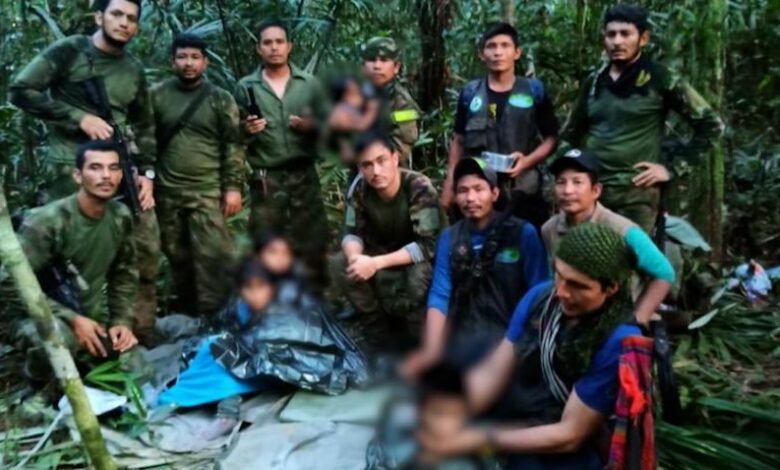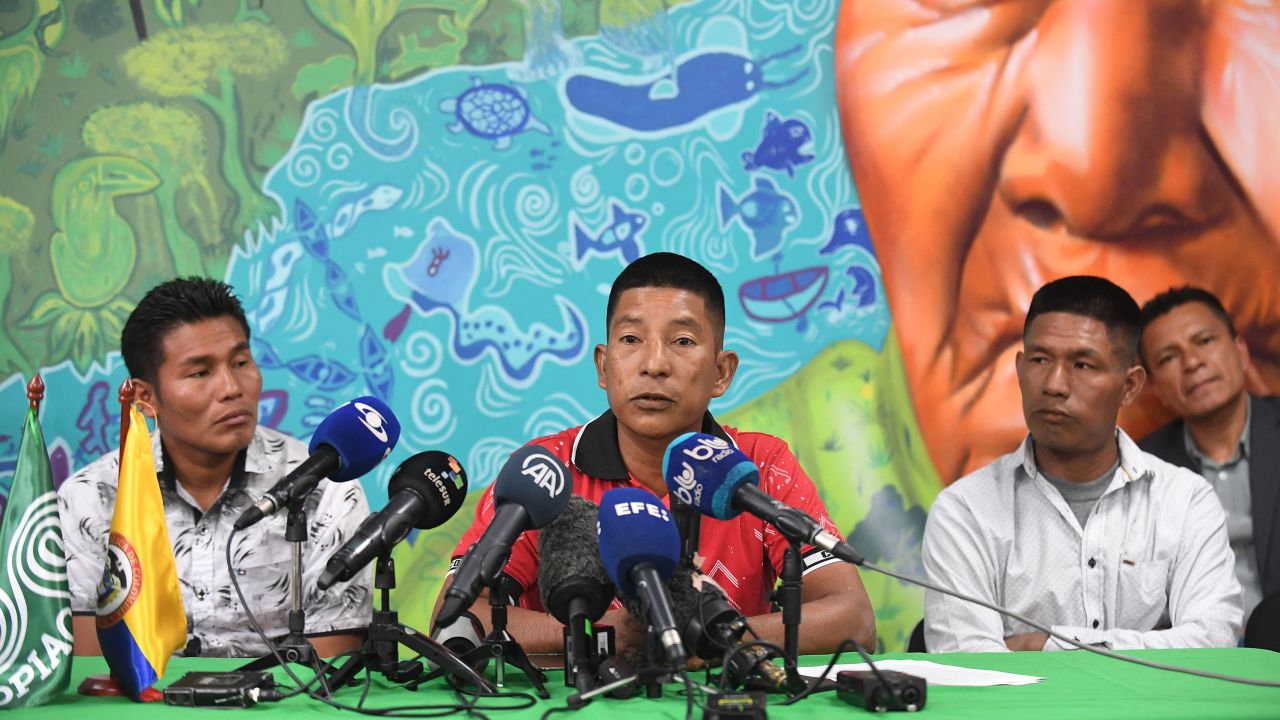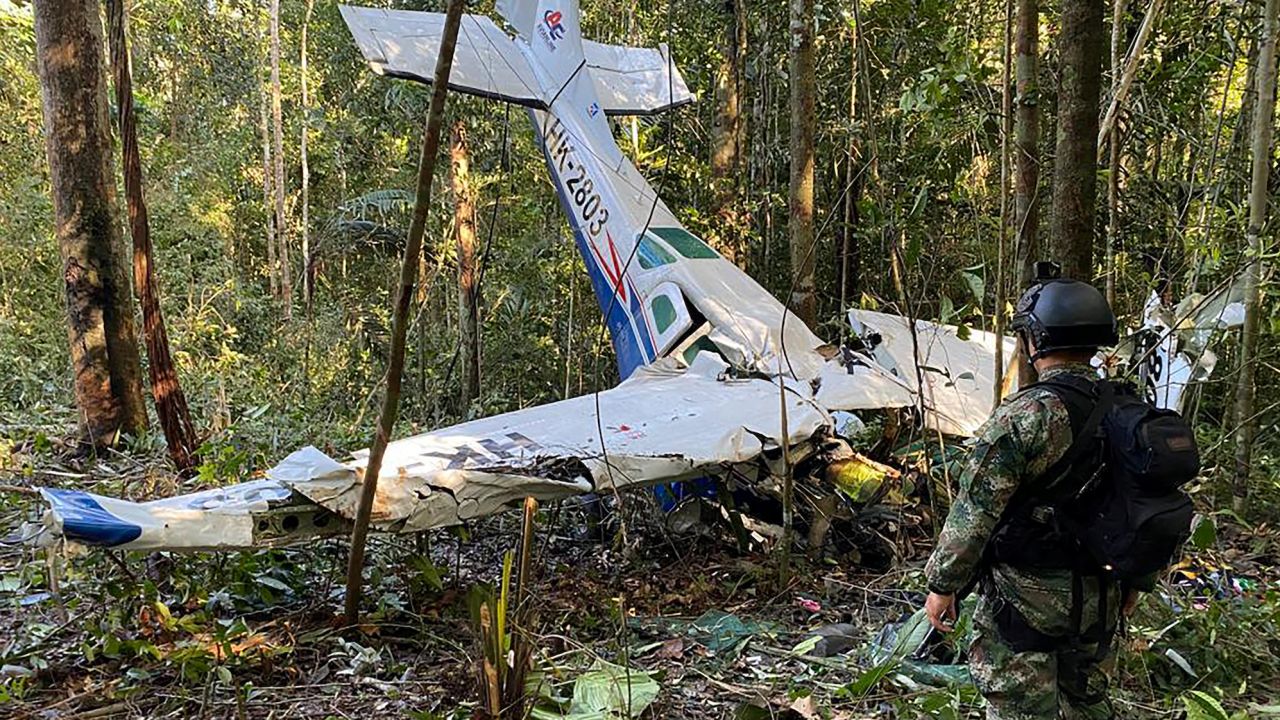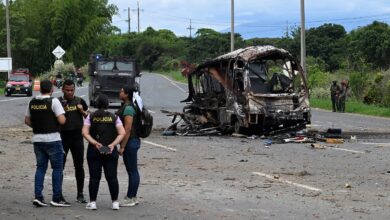
When four young indigenous children were found last week after 40 days in the Colombian Amazon jungle, their rescuers noticed that the oldest, 13-year-old Lesly Jacobombaire Mucutuy, had something hidden between her teeth.
“We found she had a couple of seeds slowly chewed between her cheeks and her jawbone,” said Eliecer Muñoz, one of the four indigenous guards who made the very first contact with the children.
Muñoz told CNN the seeds were from a native Amazon palm tree called Oenocarpus Bataua, colloquially known as “milpesos” in Colombia.
Its fruits are rich in fat and Amazon tribes use them to make a vegetable oil, but Leslie’s seeds were still unripe when she was found, Muñoz said.

“She was keeping them so that the warmth of her mouth would open up the seeds and she could feed the pulp to her younger siblings,” Muñoz says. “That’s how they stayed alive.”
Ever since the children were brought home, reporters and survival experts have been trying to answer this question: How did four children – the youngest just an infant – survive in the heart of the Amazon rainforest for so long?
It took a team of over 130 special force commandos and some of the most skilled indigenous guides in the country to find them.
The stretch of the jungle they were found in is one of the most remote and inhospitable in Colombia, where wild animals like jaguars, anacondas or poisonous bugs abound, rains can pour for over 15 hours a day and visibility is sometimes limited to 10 meters due to the thick vegetation.
Lesly and her siblings were dangerously emaciated when they were finally found. In more than a month without adults, they appear to have survived on wild fruits and three pounds of cassava flour, a high-protein traditional staple of the Amazon diet, that they retrieved from the wreckage of the plane crash that stranded them in the forest.

They had also found one of the hundreds of survival kits left in the jungle by the search and rescue operation, which included small rations of food, electrolytes, and lighters.
“We understand they only used one of the kits of the Army, for the rest just fruits, seeds and water,” says Henry Guerrero, an indigenous elder who was also part of the team that found them.
Indigenous pride
Only someone with deep knowledge of the forest and remarkable personal resilience could survive there for over a month – much less keep three other people alive too.
Weeks ago, most of the Colombian public following their story could not have known the extent to which Lesly and her siblings possessed those skills. But their great-uncle, Fidencio Valencia, did not despair: “They already know the jungle… they are children, but we hope they are alive and that they have access to water,” he told reporters on May 19.
His words have been vindicated.
The children have not yet spoken publicly and are recovering in Colombia’s central military hospital in Bogota. On Thursday, a statement from the hospital said the children are out of immediate danger but still considered at high risk due to infectious diseases they contracted and serious malnourishment.
The traces of their survival show impressive botanical knowledge and foresight.
During the search, rescuers found discarded fruits like avichure, a wild plant similar to the passion fruit that the children ate while alone in the forest. Seeds of milpesos were also found along their footprints, and Colombian authorities believe Lesly took some baby’s formula from the discarded plane to feed Cristin, 11 months old, for a few days.

When found, the children had bottles they used to collect water, either from streams or from the rain, which was plentiful during the month of the search.
The accomplishment feels like a moment of pride for the indigenous community of the Colombian Amazon. “Thanks to these kids we won over technology,” Guerrero gleamed at a recent press conference in Bogota. “Thanks to the kids we realized that we, the indigenous, we are important.”
While their survival remains a marvel, it was no doubt facilitated by traditional knowledge of the forest they embraced from a remarkably young age, and while Colombia deployed its army, it was four local indigenous guides who first spotted the little ones.
Lesly, in particular, is hailed for not only staying alive herself, but also making sure her younger siblings would survive following the loss of their mother in the plane crash.
When found, one of the first sentences four-year-old Tien Ranoque Mucutuy whispered to the rescuers was “my mother is dead,” Muñoz told CNN.
One of the traditional tasks of indigenous women is to look after one’s siblings as if they were your own children. An older sister is basically a second mother, and I think that is exactly how Lesly was brought up with,” says Nelly Kuiru, an indigenous activist from the murui settlement of La Chorrera.
But Kuiru believes that that prowess goes far beyond botanical expertise: “Ancestral, traditional knowledge is not just that Lesly learnt to pick up fruits or so, but there’s something much deeper there, a spiritual connection with the forest surrounding us.”
When the father of two of the children, Manuel Ranoque, learned the plane carrying his wife and their four children crashed on the way to San Jose del Guaviare, he requested the help of traditional elders and sages in his community, like Guerrero and Muñoz, who joined forces with the Colombian military to locate the children.
The military brought GPS technology, advanced radio communications, and operated over four hundred flight-hours over the jungle.
The indigenous murui searchers taught soldiers how to read tracks and move around the jungle. Traditional elders like Guerrero attempted to bridge a spiritual link with the children using traditional plants like tobacco, coca, and yagé, the sacred, hallucinogen plant also known as ayahuasca.
In the end, it was a mix of the two worlds that saved the children: Muñoz and his team finally found them, all but starved to death, in an area clear of trees they had inspected in previous days. Within a few hours, they were taken out of the jungle on a Blackhawk military helicopter.
Taught by their mother
Magdalena Mucutuy was a woman of the chagra – a sacred space that acts both as a harvesting garden and community school for traditional knowledge – who often brought her children to the forest, according to her husband.
There, they likely learned the skills that allowed them to survive until rescuers came.
“Traditionally, (indigenous) children’s upbringing takes place in the natural environment, in the forest, especially when they are very young,” says Kuiru. But she warns that intimate familiarity with the wild that allowed Leslie and her siblings to survive is under threat, she says.
“Our traditions are being contaminated by deforestation, by the presence of external actors [like criminal syndicates] and in a way, assimilation. There’s not just a physical colonization, like for example the clothes we now wear, but a colonization of knowledge and ours is being lost,” Kuiru told CNN.
In recent years, indigenous populations have abandoned the forest, pushed towards urban areas by the presence of criminal groups in the countryside and by lack of work and education opportunities, according to a 2010 study by the Colombian Amazon Institute of Scientific Research.
Ranoque himself says he was forced to abandon their native settlement in Araracuara, Amazonas, due to threats from guerrilla groups. He said that his wife and her children had also been fleeing encroachment from armed groups when their plane crashed on May 1, killing Magdalena, the pilot, and an indigenous leader – and stranding the children.
Kuiru would like the Colombian state to support and protect indigenous lifestyles and knowledges, while also offering opportunities to enter the mainstream economy. In education, that could mean allowing children to spend only half of the day in state schools and then go to the chagras to receive traditional education, she says. Or it could mean supporting local entrepreneurship to create jobs in the region and encourage young people to stay in the Amazon.
In a way, just like the four children were saved by a mix of tradition and modernity, only the two sides together can bring real development to the region.
“We should not fear modernization, but we must go back to our roots, what defines us and makes us different as indigenous people of the Amazon. If not, we will end up empty, like eggshells without filling,” she said




